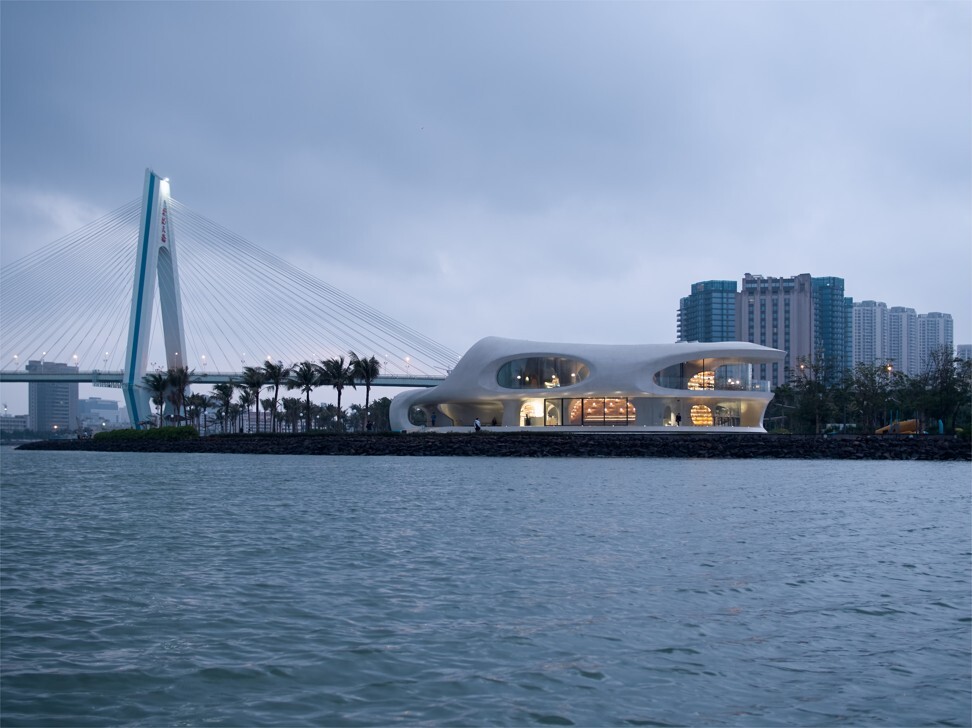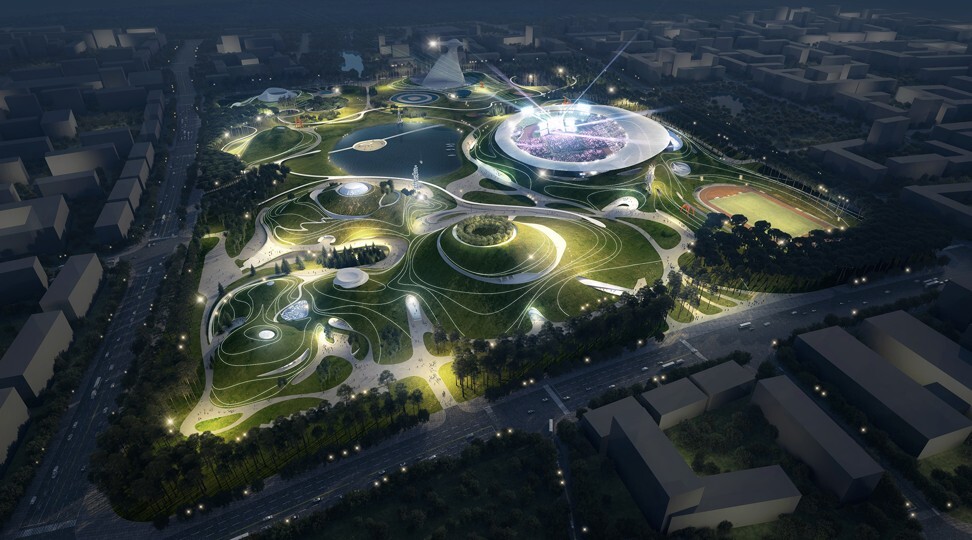
Chinese architect Ma Yansong is on a mission to transform urban living by making cities more green and human-centred
- Ma Yansong of MAD Architects’ design for the Cloudscape of Haikou library in Hainan was prompted by Albert Einstein’s theory of wormholes
- He says design should stimulate the imagination, and sides with critics of grandiose modern architecture in China such as the CCTV headquarters in Beijing
It may be called the Cloudscape of Haikou, but let your imagination dive into the waters around it and the new library in Hainan’s capital could be a creature in repose from 20,000 leagues under the sea.
Like wormholes that cut through space and time to connect two points in the universe, libraries and the books they house are conduits through which readers are transported to a new world, according to Ma. “The concept of the wormhole brings thoughts of the yonder. People should travel to faraway places when they are reading a book,” he says.
Being able to capture views via different “lenses” enhances the building’s appeal. “I asked myself whether the structure could be like a viewfinder that allowed people to see the sky and sea through the library,” Ma says.

For the library, Ma, who has designed buildings all over the world, created an exterior with biomorphic curves made of concrete. “Concrete is the most down-to-earth [construction material],” he says, and is suited to streamlined designs.
The library is the first of 16 buildings planned along the coastline of Haikou in China’s Hainan province for a large-scale public art and architecture project that includes art galleries and a museum designed by, among others, Japan’s Sou Fujimoto, Italy’s Stefano Boeri, Winy Maas from the Netherlands, and Ma’s compatriot Liu Jiakun.
Chinese architect’s tornado-inspired staircase proves a big hit
Ma says the project will be a cultural boost for Hainan and will increase international tourism to the province.
Many Chinese cities have been criticised for constructing grandiose architecture lacking in cultural tradition to encourage domestic tourism. Such has been the appetite for building big and bizarre structures that in 2016 the Chinese government issued a directive to crack down on “weird architecture”.
Having designed futuristic buildings such as the Harbin Opera House in Harbin, northeast China, and the Absolute Towers, a pair of dramatically curved skyscrapers in Ontario, Canada, Ma agrees that some structures have been built for the wrong purpose.

“The CCTV headquarters is an arrogant piece of architecture. The innovation involved [in building it] is meaningless,” he says, of the building in Beijing designed by Dutch architect Rem Koolhaas of OMA and completed in 2012.
“People and nature should be the first priority of [a designer]. We need to see the purpose behind the design. The purpose should be to provide more public space or bring more imagination to people instead of being showy,” says Ma, who himself has courted controversy with his work: his design for Shenzhen Bay Culture Park in Shenzhen, southern China, to be completed in 2023, has been likened to giant AirPods. And some internet users have described his 2017 Chaoyang Park Plaza, twin skyscrapers in Beijing, as eery.
To show what he means about designing buildings with people and nature in mind, Ma cites his Quzhou Sports Park project in Zhejiang province, eastern China. An elliptical stadium slated for completion this year, it is built atop one of several berms in an undulating park landscape criss-crossed by running trails.

Shaped like a crater, the stadium will look like a volcano, according to Ma. “People can clamber up the mounds surrounding the stadium,” he says. “The whole construction will become a new landscape.”
Despite the breakneck pace of urban renewal in China, Ma says the country has made significant progress in preserving the old.
“There should be innovative preservation that goes beyond simply conservation. The old and the new should be combined innovatively so old historic towns don’t look like each other,” he says.

A soon-to-open railway station Ma designed in Jiaxing, Zhejiang province, illustrates sensitive refurbishment of a historic site, he says. In 1921, China’s Communist Party founders, including Mao Zedong, disembarked at the original station before heading to the city’s South Lake to convene a conference on a boat and declare the formation of the party.
The station was destroyed long ago, and Ma and his team viewed historic documents and remnants of the original structure before building a station underground and a facsimile of the original two-storey station on top of it, constructed of locally made red and grey bricks and surrounded by a park.

Ma says his vision as an architect is that cities should be more human-centred, open, and green. He hopes to spark debate by speaking out about the built environment.
“People might agree or disagree with my views,” he says. “It’s the job of an architect to disseminate such views for the wider public to judge so architecture and city [planning] will become a topic for public discussion.”

